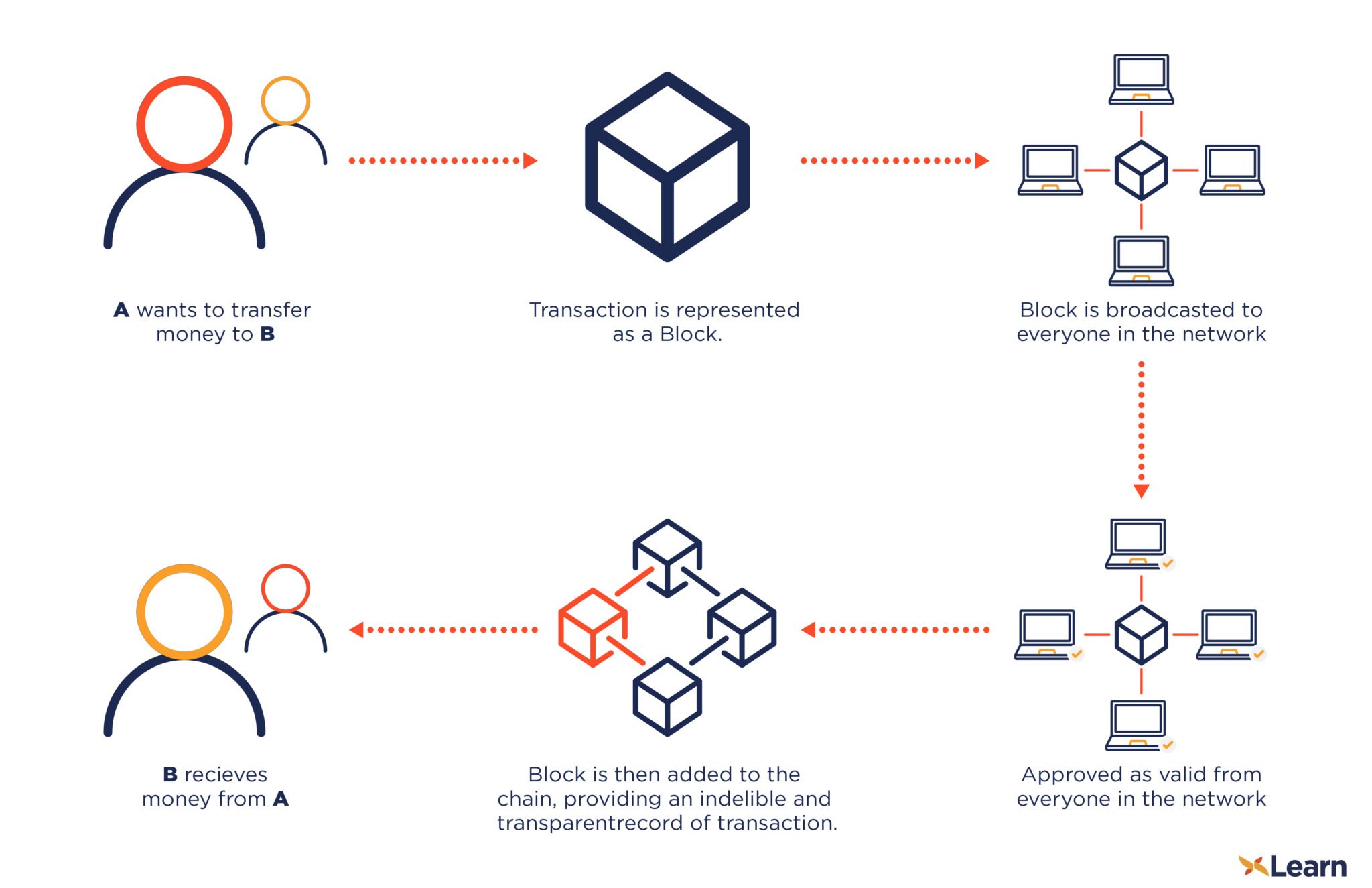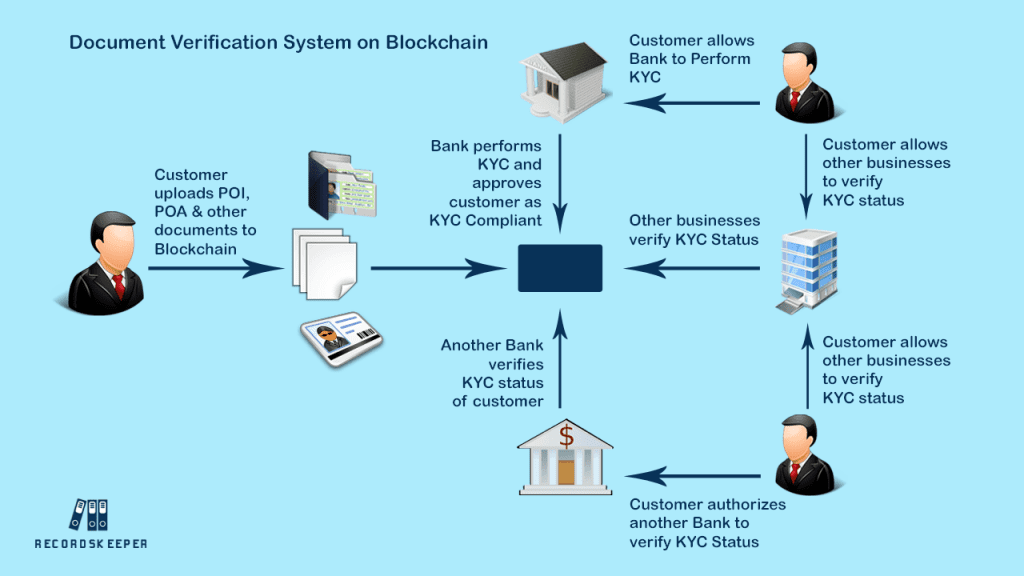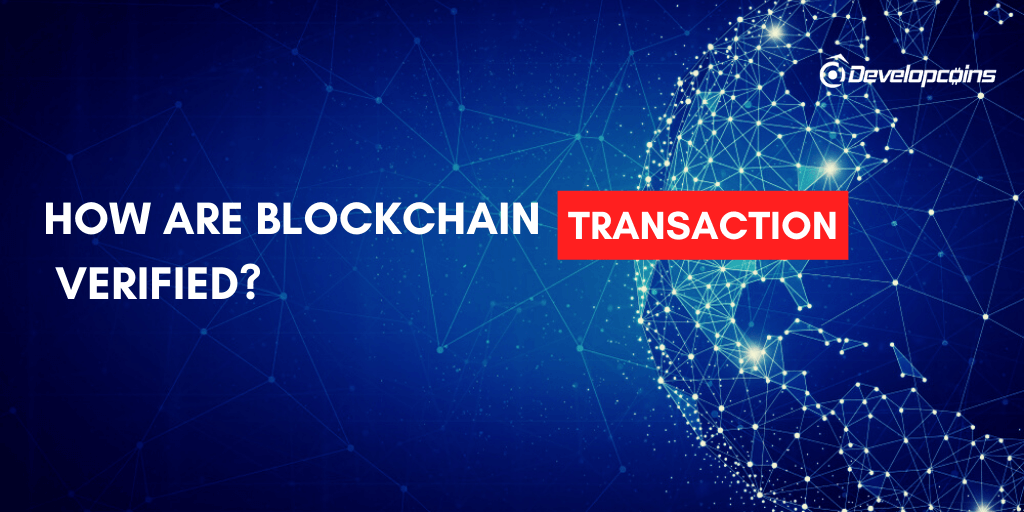Proof of Work (PoW): In PoW-based blockchains like Bitcoin, miners compete to solve complex mathematical puzzles. The first miner to solve the puzzle broadcasts the solution to the network for verification. If the solution is correct, the block is added to the chain.
How are blockchains validated?
Firstly, Miners validate transactions on blockchains that use a Proof-of-Work consensus mechanism, such as Bitcoin. With this method, miners with specialized computers must work to solve complex mathematical problems. The miner that solves the puzzle first receives both a block reward and the transaction fee.
How does blockchain authenticate?
Blockchain authentication works by verifying transactions within the network. A transaction is signed using a private key and broadcasted to the network. The nodes validate the transaction using the corresponding public key, and a process called hashing ensures the data hasn't been tampered with.
How is a block verified?
On the Bitcoin blockchain, a block is verified by miners, who compete against each other to verify the transactions and solve the hash, which creates another block. On the Ethereum blockchain, a block is validated by randomly selected nodes, which is must faster because there is no competition.
How long do blockchain take to verify?
5 minutes to 2 hours
If your submission is clear and consistent, the automated verification may take anywhere from 5 minutes to 2 hours. If there are problems and a manual review is required, it may take approximately 5 business days.
What is blockchain authentication?
Blockchain authentication works by verifying transactions within the network. A transaction is signed using a private key and broadcasted to the network. The nodes validate the transaction using the corresponding public key, and a process called hashing ensures the data hasn't been tampered with.




#Blockchain is a distribution system to deploy a peer-to-peer n/w of nodes, which verifies the transactions submitted to network & allows a set of the transactions to be stored in the ledger; Blockchain is driving the next generation eGov Applications.
— NIC (@NICMeity) March 25, 2022
🗞https://t.co/YrOkzTfn2r
What is a blockchain verified certificate?
Blockchain verification is a secure way to confirm the authenticity of credentials using blockchain technology. Blockchain verification is like a public, secure stamp of approval for digital information.
Frequently Asked Questions
How does blockchain validation work?
The most accepted form of validation for open-source blockchains is proof of work—the solution to a mathematical puzzle derived from the block's header. Miners try to “solve” the block by making incremental changes to one variable until the solution satisfies a network-wide target.
Who validates the blockchain?
Firstly, Miners validate transactions on blockchains that use a Proof-of-Work consensus mechanism, such as Bitcoin. With this method, miners with specialized computers must work to solve complex mathematical problems. The miner that solves the puzzle first receives both a block reward and the transaction fee.
Who confirms crypto transactions?
Confirmations Explained
Roughly every ten minutes, a new block is created and added to the blockchain through the mining process. This block verifies and records any new transactions. The transactions are then said to have been confirmed by the Bitcoin network.
How data is validated in blockchain?
To validate the integrity of these data, we describe a blockchain-based hash validation method. The method assumes that the actual data is stored separately from the blockchain, and then allows a data identifier and a hash of these data to be submitted to the blockchain.
Is the blockchain verifiable?
When an Accredible credential is issued and recorded to the Blockchain, the record of the credential is written into the list of Blockchain transactions. Because the Blockchain is public anyone can verify that the credential was recorded at the correct time, validating that information you see at Accredible is correct.
FAQ
- How certificates are verified using blockchain?
- Certificates that are stored in the blockchain are validated by matching the hash value. The verification of the hash value of the certificate is used to avoid tampering. The employer or verifier can log in to the application using their login id and password.
- What is the verification process of blockchain?
- Blockchain verification is the process of confirming the authenticity and validity of transactions and data within a blockchain network. As a decentralized system, blockchains rely on a consensus mechanism to achieve agreement among multiple participants, known as nodes, on the state of the ledger.
- How are blockchain transactions verified?
- A transaction is considered verified once the miner solves a cryptographic (mathematical) puzzle. Bitcoin uses a protocol called proof of work, which has a broad goal to prevent cyber attacks from any single entity or group.
- How is authentication done in blockchain?
- Blockchain authentication works by verifying transactions within the network. A transaction is signed using a private key and broadcasted to the network. The nodes validate the transaction using the corresponding public key, and a process called hashing ensures the data hasn't been tampered with.
- How blockchain can verify documents?
- When a user presents a document, the Exonum blockchain protocol gives it a digital signature. The digital signature copied to a public blockchain and stored in a private blockchain as well. Any user can verify the digital signature of a document, certifying its authenticity.
Who verifies blockchain transactions
| Does blockchain require ID verification? | At Blockchain.com, we take our regulatory obligations seriously, including preventing financial crime like money laundering and terrorist financing. That's why we require identifiable information from our customers. |
| How does verification happen in blockchain? | Proof of Work (PoW): In PoW-based blockchains like Bitcoin, miners compete to solve complex mathematical puzzles. The first miner to solve the puzzle broadcasts the solution to the network for verification. If the solution is correct, the block is added to the chain. |
| How does blockchain authentication work? | Blockchain authentication works by verifying transactions within the network. A transaction is signed using a private key and broadcasted to the network. The nodes validate the transaction using the corresponding public key, and a process called hashing ensures the data hasn't been tampered with. |
| How does blockchain confirm transactions? | Consensus Algorithm The blockchain network is comprised of nodes or participants of the network that validate and relay transactions to transmit information. All nodes are operated voluntarily and are used to verify the correct transactions on the blockchain. |
- How long does it take blockchain to verify my identity?
- 5 minutes to 2 hours If your submission is clear and consistent, the automated verification may take anywhere from 5 minutes to 2 hours. If there are problems and a manual review is required, it may take approximately 5 business days.
- Why does blockchain take so long to verify?
- One of the primary factors that can cause transaction delays is network congestion. When the network is experiencing high transaction volumes, miners have a larger pool of transactions to process. As a result, it may take some time for your transaction to be included in a block and confirmed.
- What does verification mean blockchain
- When an Accredible credential is issued and recorded to the Blockchain, the record of the credential is written into the list of Blockchain transactions.
- How does blockchain verify records
- Blockchain verification is the process of confirming the authenticity and validity of transactions and data within a blockchain network. As a
